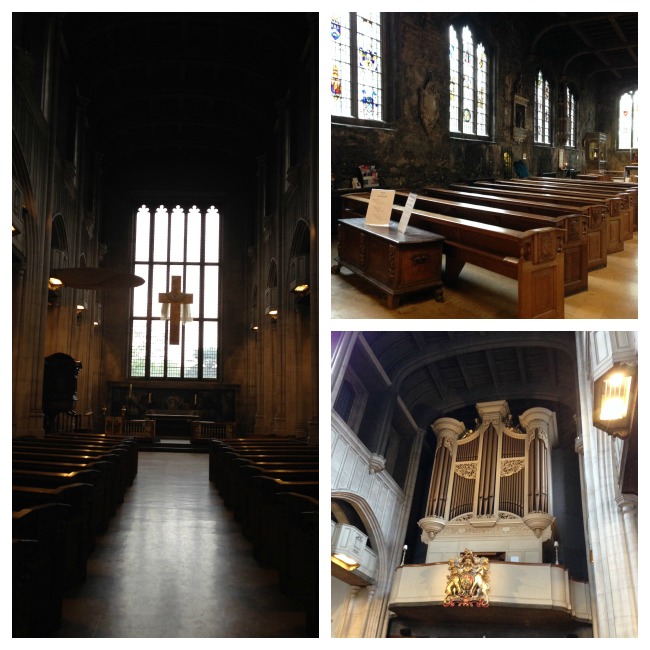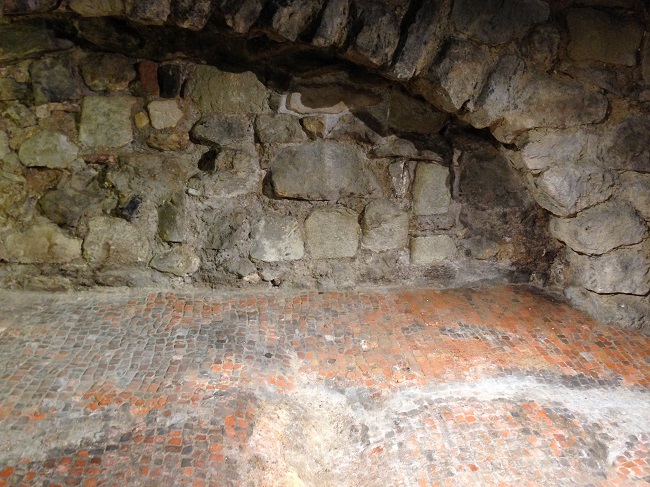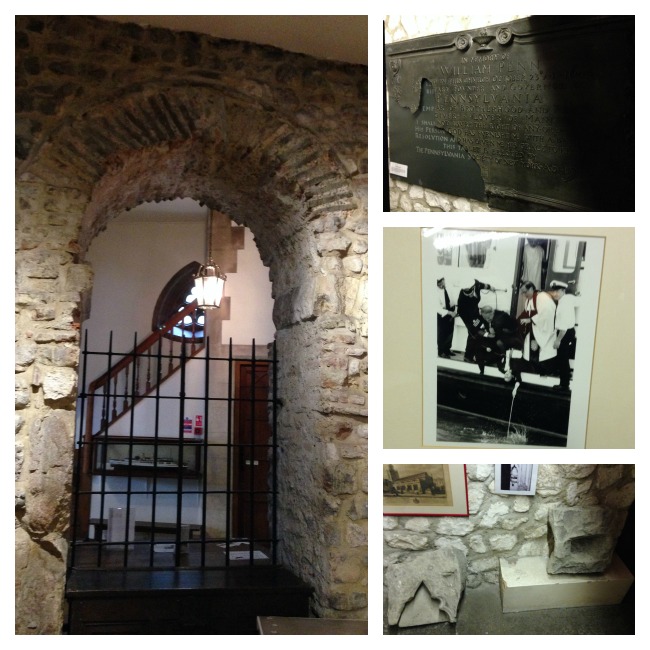Have you ever walked by a place a bunch of times but never noticed it? And then it’s not until someone else points it out that you finally see it for real for the first time. That happened to me with All Hallows by the Tower. A few weeks ago, after we went to Duck & Waffle, Charlotte suggested we check out the church All Hallows by the Tower, which as you’d imagine, is by the Tower of London. I’ve been to the Tower a few times, and I’d seen the church, but never thought about it. But, I’m so glad Charlotte read about it because it was so interesting!
First, the space is intimate (thought fairly spacious), charming, and beautiful without being ostentatious. This is controversial, but sometimes I’m tired of big fancy churches. You know, with their high ceilings, fat columns, and stained glass. Yes, you’re beautiful I get it. However, in every city in Europe people go to see the gorgeous gigantic churches. Sometimes the small ones are refreshing.
And this on in particular has so much history. It was founded in 675 AD, which is awesome just on its own. But well before the church, it was a Roman home! The photo above is a Roman tiled floor that dates to the 2nd century. How cool is that?! What I really loved is that there are even more layers of history evident in this one building.
The building was damaged by a nearby explosion in 1650, but then survived the Great Fire of London in 1666. As a result of these disasters, and religious turmoil, in the 18th century one of the churchmen locked away their registers in a lead cistern (photo below). Then 200 years later the cistern was found and unlocked and the hand written registers were found in pristine condition.
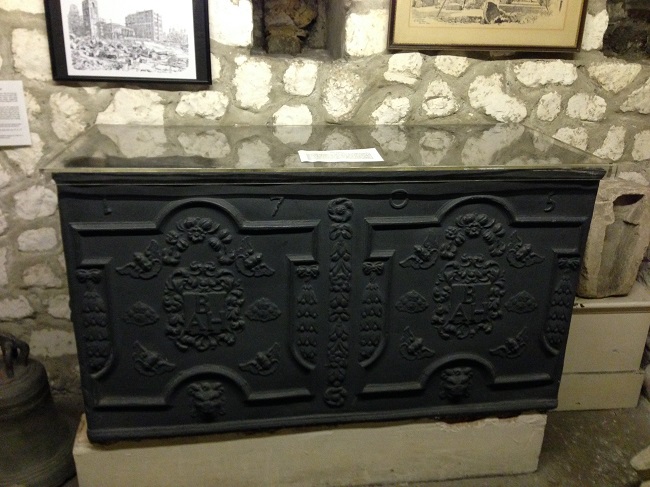 So, having hundreds of years of documents all in perfect condition is awesome. For me, what’s even cooler is some of the information found in the registers. You can see that William Penn, founder of Pennsylvania, was baptized in this church (photo below, bottom right). Also, John Quincy Adams was married in this church (photo below, top right). I didn’t realize John Quincy was married in England, and I didn’t know there had been a first lady born outside of the US. Learn something new every day, right? I loved seeing those documents. For me, handwritten documents are so easy to connect with and it feels easy to transport my mind back to that moment in history.
So, having hundreds of years of documents all in perfect condition is awesome. For me, what’s even cooler is some of the information found in the registers. You can see that William Penn, founder of Pennsylvania, was baptized in this church (photo below, bottom right). Also, John Quincy Adams was married in this church (photo below, top right). I didn’t realize John Quincy was married in England, and I didn’t know there had been a first lady born outside of the US. Learn something new every day, right? I loved seeing those documents. For me, handwritten documents are so easy to connect with and it feels easy to transport my mind back to that moment in history. 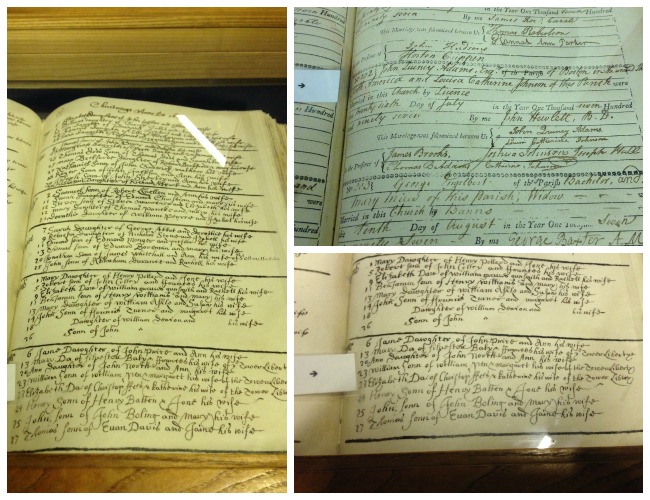
And still, there’s more cool history associated with this church. There is Saxon history – the arch in the photo below is the oldest surviving Saxon arch in the City of London, and some bits of it are made with Roman roof tiles. In the photo on the bottom right, below, are pieces from a Medieval piscina, which is a basin used to watch communion vessels. Those pieces were broken during bombings in World War 2. The William Penn memorial, below photo in the top right, was also damaged during World War 2.
Another great bit of history is shown in the photo below in the right middle. This is showing the beating of the bounds, a custom which goes back to Medieval times, and one which All Hallows by the Tower continues to follow every year. Beating the bounds is a way for the church to reaffirm its boundaries, and it’s done every year by members of the church. Basically, they go around with sticks and beat the edge of the property and pray for blessings. A part of the grounds for All Hallows is against the Thames, and as late as the 1980’s, children were sometimes held upside down over the river so they could beat that outside boundary. Today, people use boats.
I left completely impressed by the Roman, Saxon, Medieval, and modern history that have left their mark on, and are a part of, this really lovely church. Being next to the Tower, it’s easy to overlook, but don’t do it. All Hallows by the Tower is a not-so-hidden gem.

